Sustainable Supply Chain Optimization is an approach to network design that combines cost-effectiveness with environmental responsibility.
This approach of network design include assessing and evaluating suppliers or (in-house factories) based on sustainability criteria such as health and safety, environmental impacts or labour rights.
This topic is probably relevant in your organizations, as the companies are pressured to reduce their carbon footprint to meet environmental targets.
How can we use data analytics to help your organization reach its sustainability targets by automatically design optimal supply chain network?
Unlike traditional models prioritising outsourcing to low-cost regions (to minimize costs), there is a noticeable shift towards localizing production in environmentally efficient facilities to minimize the environmental footprint.

However, balancing cost efficiency with CO2 emission reduction is a complex task that requires careful planning and strategic decision-making.
Therefore, we will introduce a method we designed to automate network design and support data-driven decision making for your sustainability roadmap.
Supply Chain Network Design Problem
Let us start to introduce the content and the objective of this study.
Context of International Manufacturing
To illustrate this notion, we will take the example of an international manufacturing
group with markets in USA, Germany, India, Brazil and Japan.

Supply Capacity
In each country, you can select a up to two factories to manufacture products and meet both local and external demands.

Example: Low Capacity factories in the USA can produce 5,000 units/month.
Fixed Costs
If you open a facility you have fixed costs to add to your budget (Electricity, Real Estate, CAPEX, …).

Note: In this example, High-capacity plants in India have lower fixed costs than low-capacity plants in the USA.
Variable Costs
For each unit produced, you have a variable cost depending on the location (HR Costs, consummables, ...)
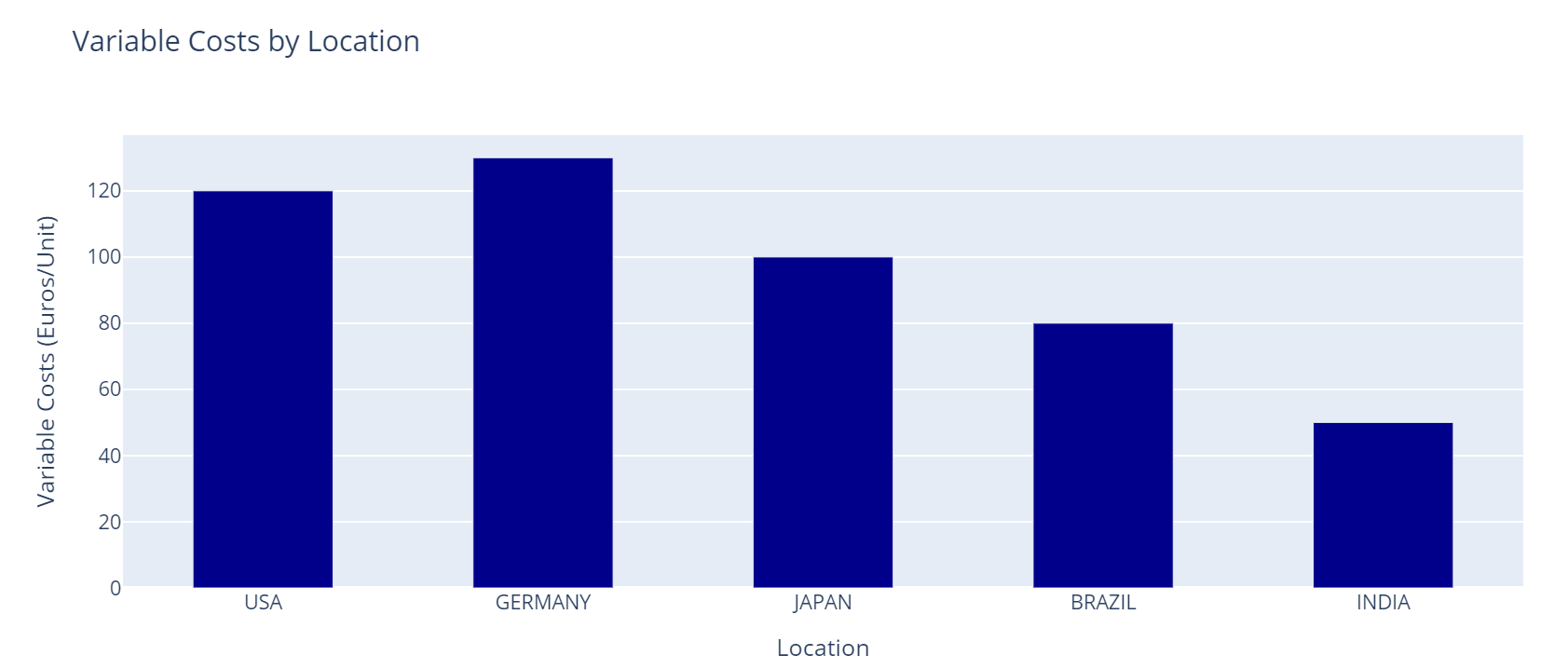
Fixed Costs + Variable Costs = Total Costs of Production
Transportation Costs
And what is remaining is the freight cost to deliver each market from the producing country.
Example: it costs 12 euros / Unit to deliver Germany from India by sea freight.
Total Costs
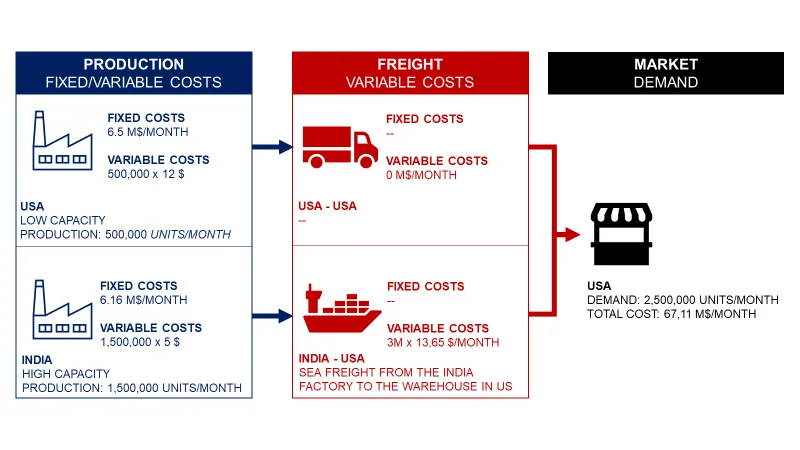
The total costs defined above becomes the objective function we would like to minimize with an optimal network design.
Solution
If we stick to these parameters, we are facing a conventional network design problem focusing only on cost optimization.

We want to minimize the total cost of production and delivery while respecting two constaints:
- Factories productions cannot exceed their capacity
- The total supply to each market should be higher or equal to their demand
Results
Total Costs: 5.68 (M€)
In this example, the model minimizes Production Cost by selecting 4 plants: India low-capacity plant, Japan high-capacity plant, Brazil high-capacity plant and India high-capacity plant.

Japan's factories produce only for the local market, while Brazil and India are mainly driven by export demand.
In this example, we have the optimal footprint to supply the markets at the lower cost with the current available sites.

💡Insights: the high freight costs of sourcing overseas are compensated by the low production costs of India and Brazil.
But what about sustainability?
Sustainable Sourcing Problem
We can improve the model by adding parameters linked to environmental footprint of the factories and sea freight.
Environmental Footprint Parameters
Manufacturing footprint
For each production location, we include
- Energy Usage (MJ/Unit)
- Water Usage (L/Unit)
- Waste Generation (kg/Unit)
- CO2 emissions (kgCO2eq/Unit)
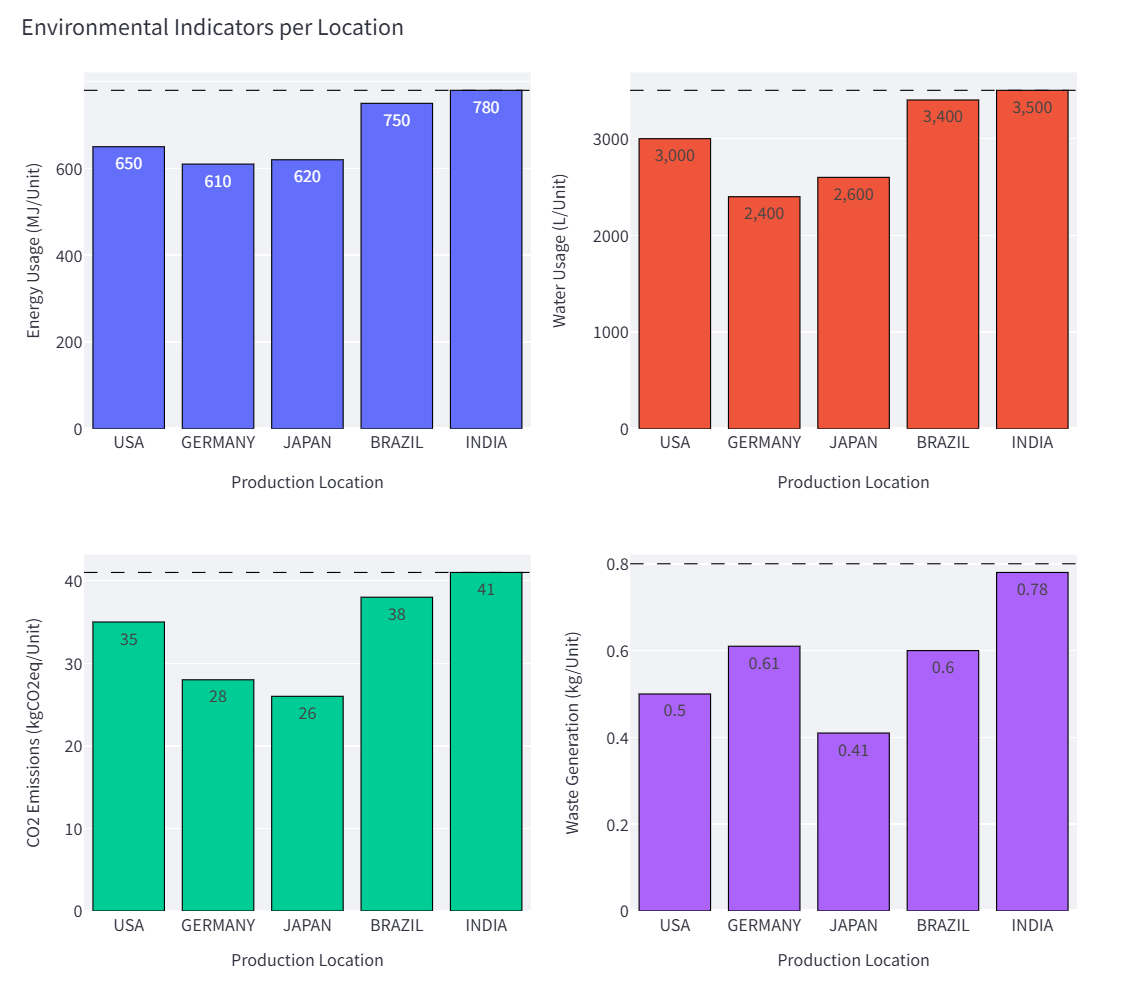
Transportation Footprint
On top of this, we add the CO2 emissions per unit transported from each location to each market using this formula:

We can now calculate the total footprint (CO2eq, Water, Energy or Waste) of each unit produced in the factory X and delivered to the market Y.
What is the impact on the footprint and costs?
For the previous solution, we have a total emissions of: 5,882 tons of CO2eq
Scenario 2: Minimize CO2 emissions
Let us assume that you want to minimize CO2 emissions per unit produced and delivered.

The model decided to focus on local production using the factories at their highest capacity in USA.
Except for Germany that export to USA, to composate for the 8,000 remaining Units that could not be produced locally, all the other countries are only producing for their local market.
Total Costs jump from 5.68 (M€) for the optimal scenario to 8.7 (M€).
However emissions are not reduced to 2,136 tons (CO2eq) (vs. 5,882 tons for the cost optimal scenario).
We can do the same exercise for another environmental metric.
Scenario 3: Minimize Water Usage
For the cost optimal scenario, we mainly produce from Brazil and India that have the highest water consumption.
Therefore, we have a total of 2,780 L of water used per unit produced.
If we change the objective function to minimize water usage
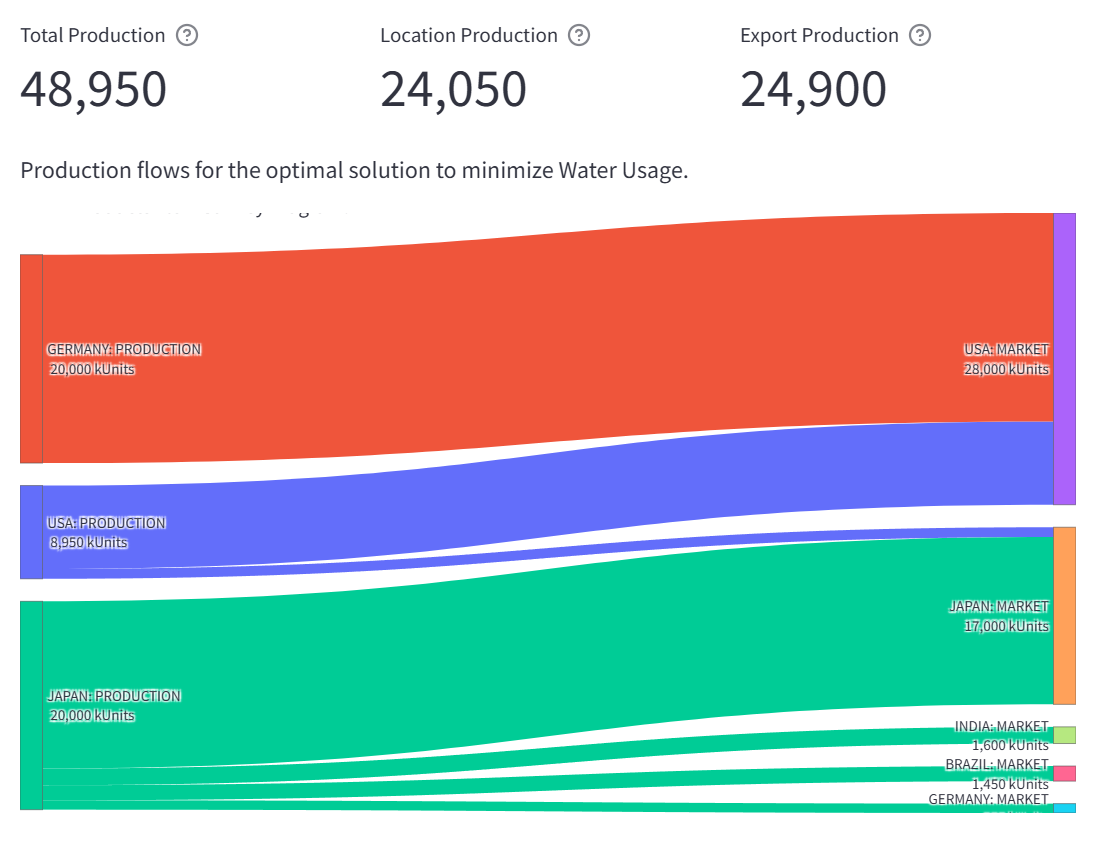
Germany and Japan take the lead for the production while India and Brazil have no factory.
💡An interesting point is to see that the algorithm selected japan for the production of germany market.
When you don't specify that you want to minimize costs or CO2 emissions, shortcuts can be forgotten!
Do you want to try yourself?
Sustainable Supply Chain App
A prototype of this model has been deployed on a web app: LogiGreen App
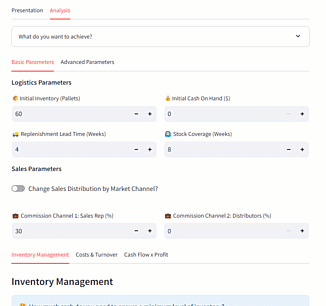
This prototype, currently in development, is already available for test.
How to test it?
You can test the model without uploading data by just following the steps below
Step 1: Go to the sustainability page
- 🔗Link: Sustainability Module

Step 2: Select Supply Chain Optimization on the left side bar
You will arrive in the presentation page of the module where you can find a brief presentation of the model with the inputs parameters and the results provided.
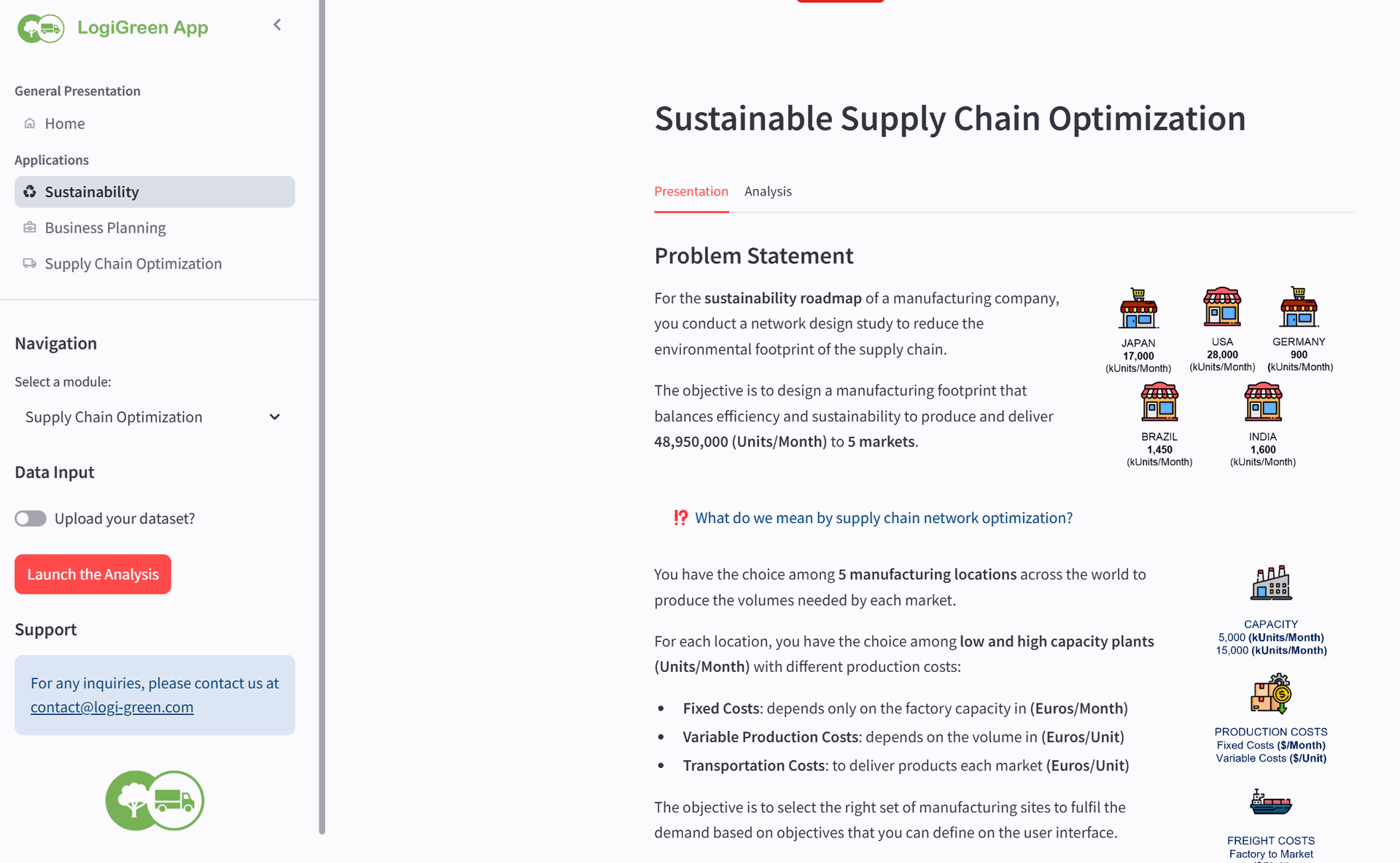
Step 3: Go to the 'Analysis' tab

You can select
- The objective functions (CO2 emissions, costs, water, energy or waste)
- Add constraints of maximum footprint
Step 4: Click on Launch the Analysis
You can then visualize the results.

You will find additional indicators like the Cost of Goods Sold (COGS) along with other business metrics to help you assess the results.
Any question?
For any inquiries, please contact us at contact@logi-green.com
This blog post is based on articles originally published on Medium
- Data Science for Sustainable Sourcing by Samir Saci
- Create a Sustainable Supply Chain Optimization Web App by Samir Saci